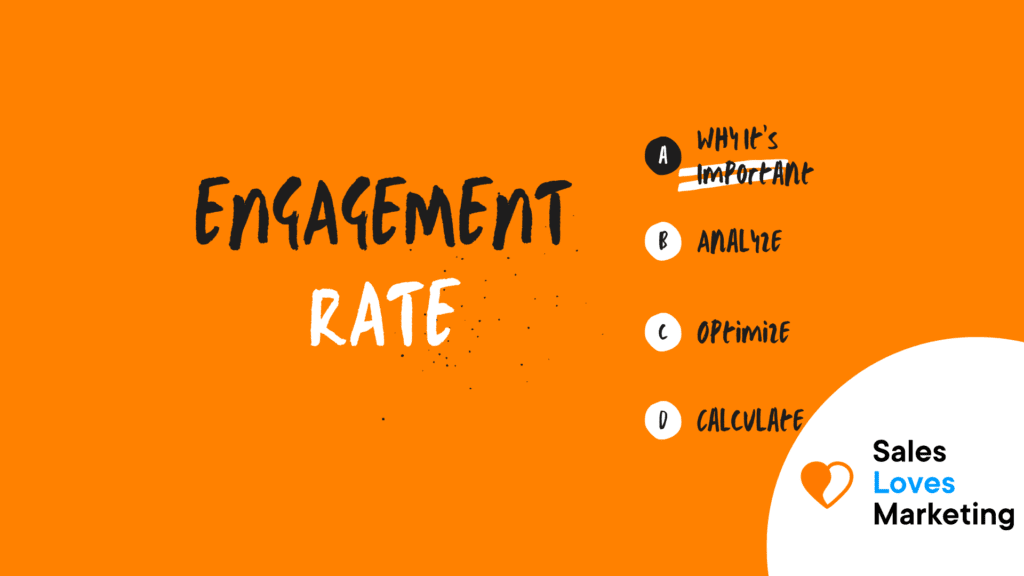What is the Engagement Rate?
Engagement Rate is a metric used to calculate the degree of interaction visitors have with the published content.
An example of interaction is when people are commenting, liking, or sharing content.
This indicator is of great importance because it helps to measure, among others, the success of the brand campaign’s content strategies.
Why is the Engagement Rate important?
Engagement is important in digital marketing because consumers are the ones who choose to interact with the content of a brand, which is why knowing the level and frequency with which they do it is vital to know if a campaign is successful.
Among the advantages of knowing the engagement rate are:
- It is useful to analyze the social networks of a brand as it allows evaluating and analyzing competitors.
- It helps to evaluate advertising campaigns on social networks.
- The engagement rate can be calculated in both large and small companies because it is based on the number of followers and how they interact with the content.
- It helps to evaluate the quality of the content published and the potential reach of the brand.
It is important to note that this metric can be customized to have a broader view, depending on the platform and the consumer interaction type. This information, when analyzed alongside other metrics, can contribute to achieving specific objectives.
How is the Engagement Rate calculated?
To calculate the Engagement Rate, the Total Engagement is divided by the Total Followers, multiplied by 100, as follows:
Engagement Rate= (Total Engagement / Total Followers ) x 100
– Total Engagement: the number of interactions (this measure depends on the platform).
– Total Followers: is the total number of people who follow the account, page, others.

Total Engagement is calculated differently depending on the social platform.
Each network has one or several types of engagement metrics, which is the sum total of smaller engagement metrics.
For example, on Twitter, there are particular Engagement metrics per profile or per post such as retweet, reply, like, share, etc., which are used in different reports such as Retweets vs. Shares.
In the case of Facebook, Total Engagement would be formed by the total amount of shares such as Likes, comments, and reactions.
Another example is that of the Instagram social network, which would be composed of the total number of Likes and comments.
It should be noted that if what is wanted to know is How To Calculate TikTok Engagement Rate, the formula used to measure it would be the following:
[(Number of likes + number of comments + number of shares) / number of views] X 100

What is a Good Engagement Rate on Instagram?
In the case of Instagram, knowing the Engagement Rate of the account is of utmost importance because it measures the brand’s relevance, the level of interest of the audience, and the social authority.
It should be noted that Instagram is one of the social networks with higher interaction rates than others, for example, approximately more than 20% compared to Facebook.
In this social network, there is no single definition of what is a Good Engagement Rate; this happens because it can vary according to the branch and the intended objectives.
However, according to studies, it is said that the average engagement rate in all industries is approximately 1.22%. However, this general average may vary in cases such as the specific sector of higher education, which has more than 3%.
